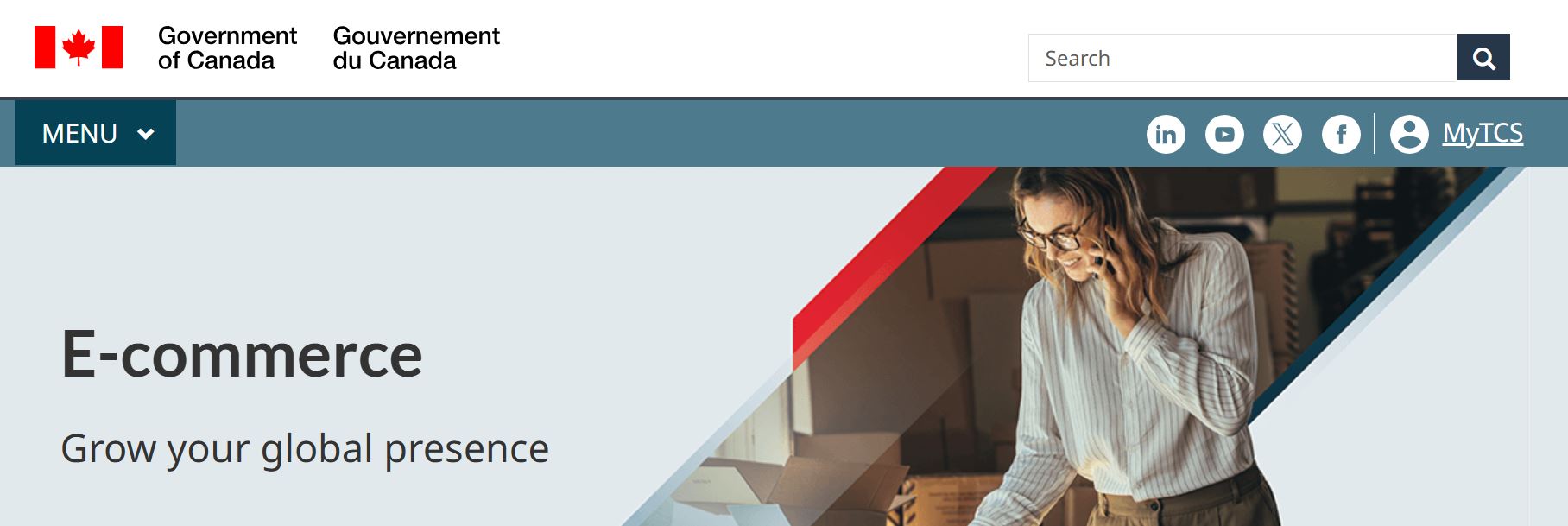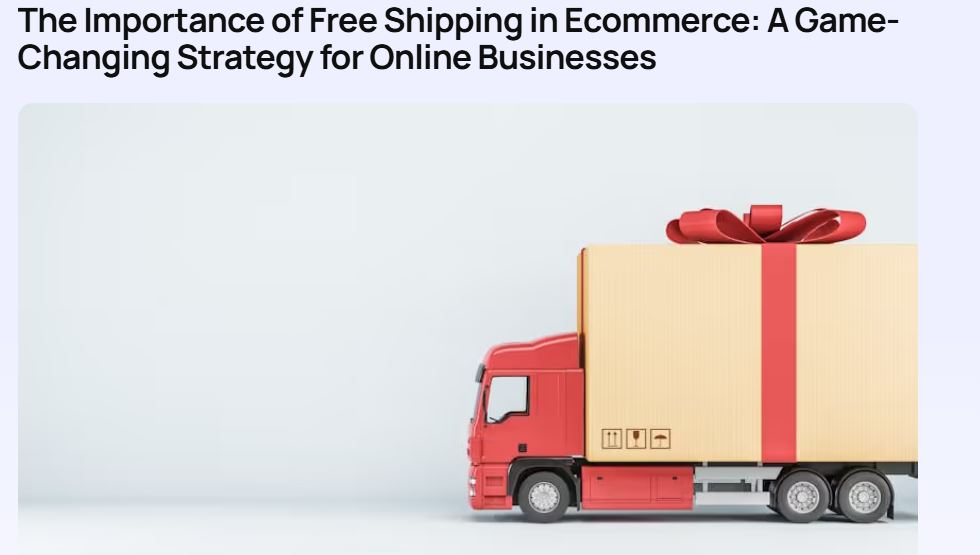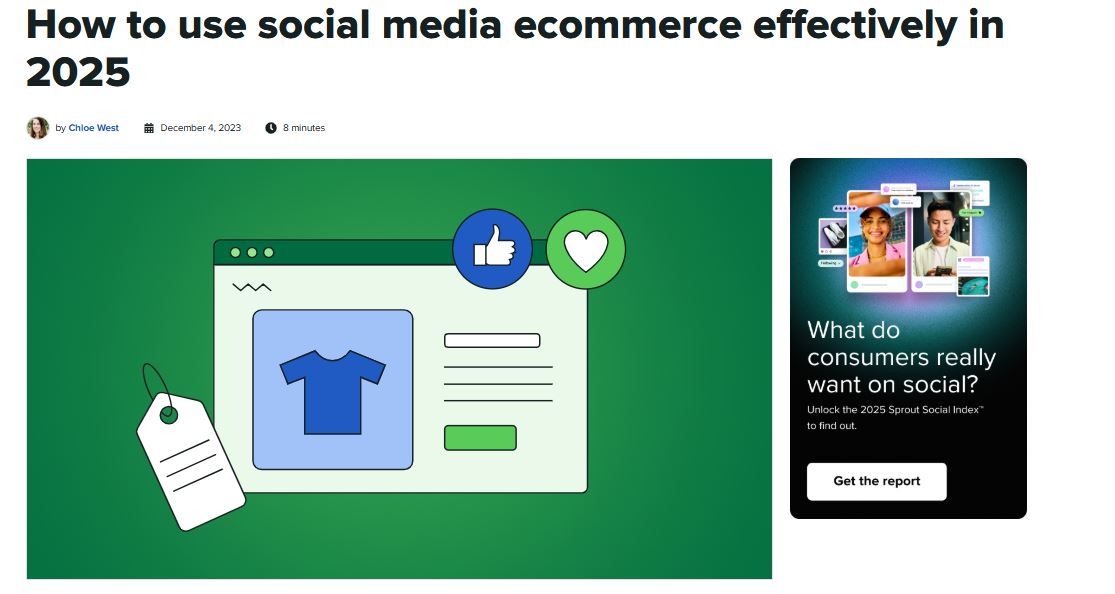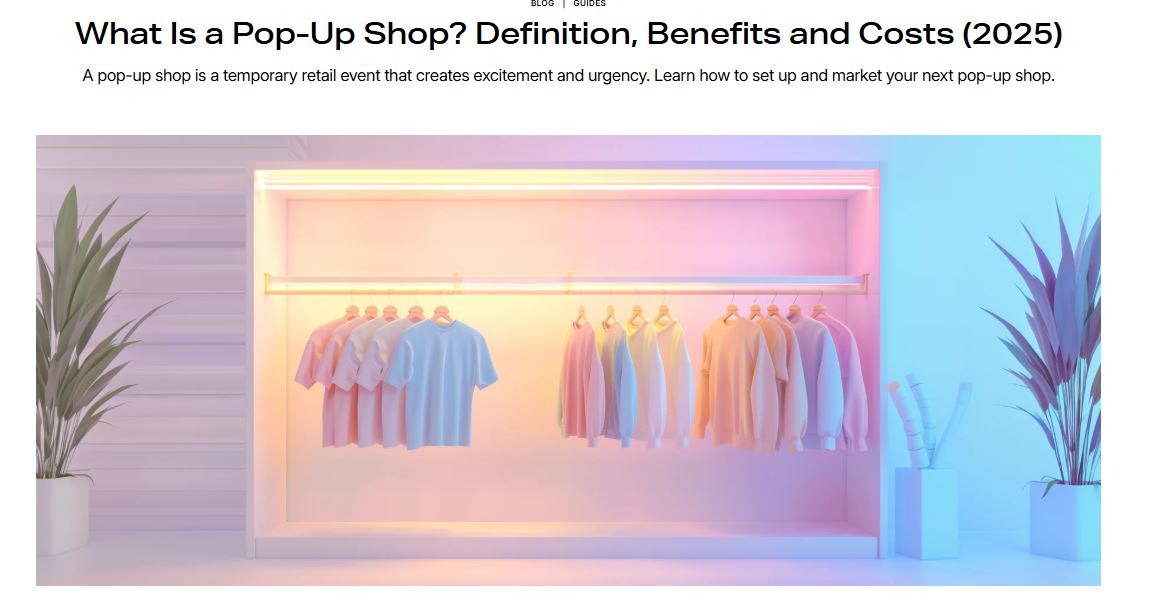The #1 tip for Canadian e-commerce success? Prioritize high-ROI strategies that keep customers coming back for more.
Running a successful e-commerce business in Canada takes more than offering great products—it requires a laser focus on strategies that maximize return on investment (ROI). From mobile optimization to smart review collection, effective tactics help you attract the right shoppers, convert browsers into buyers, and turn first-time customers into loyal brand advocates.
This guide breaks down 13 essential strategies proven to drive growth, increase conversions, and boost lifetime customer value. Whether you're just getting started or looking to fine-tune your digital marketing, these insights will help you stay ahead in a competitive marketplace.
If you're a small to medium-sized business looking for help with Canadian E-Commerce marketing strategies, contact Profitworks today!
1. Effective Product Commentaries
Customer reviews are one of the most powerful tools Canadian e-commerce brands can use to build trust and drive conversions. In a market where shoppers often rely on online cues before committing to a purchase—especially when choosing between domestic and international retailers—authentic product feedback provides critical social proof.
Implementing a consistent and automated review collection system helps Canadian businesses stand out in a competitive digital landscape. By prompting customers to leave ratings and reviews at key moments—such as after delivery—you not only streamline the process but also gather insights that can directly improve product pages and buyer confidence.
To boost local relevance, include review questions specific to the Canadian shopping experience. These might include feedback on delivery reliability in remote areas, bilingual product labeling, or responsiveness to regional customer service issues.
Example: Use a post-purchase pop-up or follow-up email to request a review. Ask targeted questions like:
-
How was your delivery experience (especially across provinces or in rural areas)?
-
Was the product description accurate and helpful?
-
Would you recommend this item to other Canadian shoppers?
Display ratings prominently on product pages, and consider highlighting reviews from fellow Canadian buyers to reinforce trust and relevance. This strategy not only improves customer confidence but also leads to higher ROI through increased conversion rates and repeat purchases.
2. Seamless Customer Loyalty Programs
For Canadian e-commerce brands, retaining customers isn’t just good practice—it’s a smart investment. The cost of acquiring new customers continues to rise, especially with digital ad competition from U.S. and global retailers. That makes customer loyalty programs a key strategy for improving lifetime value and maximizing ROI.
Loyalty programs reward repeat customers while encouraging consistent engagement with your brand. Point-based systems, exclusive member perks, and early access to sales are all effective in the Canadian market, where consumers often value value-added incentives and local recognition.
To connect with Canadian shoppers, consider tying rewards to culturally relevant events like Boxing Day, Canada Day, or regional holidays. Offer bilingual program options to serve both English and French-speaking customers, especially in Quebec, and highlight perks like free shipping upgrades or local brand partnerships.
Example: Create a loyalty program where customers earn points for every dollar spent. Points can be redeemed for discounts, free products, or exclusive access to seasonal promotions. Include VIP tiers that recognize your most loyal customers and personalize their offers with local preferences (e.g., free shipping to Northern provinces or early access to Canadian-made collections).
These strategies don’t just boost retention—they show your customers they’re valued, which strengthens long-term brand relationships and contributes to consistent revenue growth.
Source: https://www.shopify.com/ca/enterprise/blog/ecommerce-loyalty-programs
3. Mobile Optimization
With more Canadians shopping on their phones than ever before, mobile optimization is no longer optional—it’s essential for staying competitive. From downtown Toronto to rural Alberta, mobile shopping spans demographics and geographies, making it critical that your online store performs seamlessly across all devices.
A responsive design ensures your website looks great and functions well on any screen size. Fast load times, intuitive navigation, and finger-friendly buttons all contribute to a smooth user experience. These features aren’t just convenient—they directly impact conversions. A slow or clunky mobile site can lead to lost sales, especially in regions where mobile data speeds may vary.
Mobile-first checkout design is especially crucial. Use large, tappable buttons, simplify form fields, and integrate autofill for addresses and payment info to reduce cart abandonment. Secure, one-click payment options like Apple Pay or Interac can further streamline the experience for Canadian consumers.
Another key piece of mobile success in Canada? Trust. Featuring authentic user-generated content (UGC)—like photos and videos from real customers—enhances credibility. Highlight stories from Canadian shoppers to show your product in real-world use cases across the country. This fosters connection and builds the confidence needed to complete a purchase.
Pro Tip: Run seasonal UGC campaigns that tie into Canadian moments like cottage season, back-to-school, or winter prep. This creates relatable, mobile-friendly content while encouraging engagement and brand loyalty.
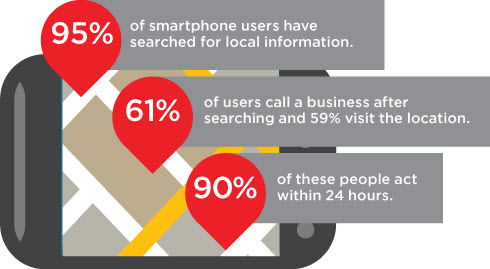
4. Incorporate Visual UGC
Showcasing verified buyer photos is one of the most effective ways to build trust with Canadian shoppers. Implement user-generated content (UGC) features that highlight real customer experiences—especially when tied to regional or seasonal themes. Whether it's someone unboxing your product in Vancouver or using it in a Toronto condo, authentic visuals help prospective buyers visualize their own experience.
To boost participation, create interactive UGC campaigns that celebrate contributors. Think photo contests, featured customer shout-outs, or incentives like loyalty points. Recognizing your customers not only increases engagement but also turns satisfied buyers into vocal brand advocates—fueling organic growth.
On the retention side, tailored email marketing remains a powerful driver of ROI for Canadian e-commerce. Go beyond generic blasts: segment your lists based on past purchases, browsing behavior, or even regional events like Boxing Day or back-to-school promotions. Personalized offers consistently outperform one-size-fits-all messaging and help nurture long-term loyalty.
Don’t overlook abandoned cart emails—they’re a proven win. Send timely reminders featuring the left-behind product, and sweeten the deal with an exclusive discount code. Including a subtle nudge like “your cart is still waiting” paired with free shipping for Canadian orders can push hesitant customers to convert.
Pro Tip: If you ship within Canada, emphasize fast delivery timelines by province. Knowing they’ll receive their order quickly—especially during winter months—can make the difference in closing the sale.

5. Simplify Checkout Processes
A complicated checkout process is one of the top reasons Canadian online shoppers abandon their carts. To keep customers moving toward conversion, simplify every step and provide clear, reassuring guidance along the way.
Allow guest checkout without forcing account creation, and reduce the number of required fields to only the essentials. Include a variety of payment options—such as Interac, PayPal, credit cards, and even Buy Now, Pay Later (BNPL) services like Affirm or Klarna—to meet the diverse needs of Canadian consumers and remove purchase barriers.
Example: Break the checkout into a clear, step-by-step process with a visible progress bar. This helps customers feel in control and confident that they’re nearly done. Start with delivery details, then move to shipping and payment, using simple language and mobile-friendly form fields throughout. A well-structured flow leads to fewer drop-offs and more completed sales.
Pro Tip: Highlight Canadian-specific perks, like flat-rate shipping or free delivery over a certain threshold. Transparency in costs—especially duties and taxes—can significantly improve the user experience and reduce checkout friction.
6. Reinvest in Returning Visitors
Reconnecting with shoppers who showed interest but didn’t complete their purchase is one of the most cost-effective ways to increase revenue. In Canadian e-commerce, where acquisition costs can be high due to competitive ad markets and limited population density, retargeting warm leads is a smart and strategic move.
Focus your efforts on users who browsed specific products or abandoned their carts. Use dynamic ads on platforms like Meta (Facebook/Instagram) or Google Display Network that feature the exact items they left behind. Adding urgency—like limited-time discounts or low stock alerts—can push them to act.
Example: Trigger retargeting ads based on browsed items and related categories. If a shopper viewed a pair of boots on your site, show that product again with a “Back in Stock” or “Limited Time Offer” message when they scroll Facebook or search for winter gear on Google. This level of personalization keeps your brand top-of-mind and drives higher click-through and conversion rates.
Bonus Tip: For Canadian consumers, emphasize benefits like free shipping within Canada, local customer support, or CAD pricing to build trust and make the offer more enticing.
Source: https://clear.co/blog/how-free-shipping-can-help-your-ecomm-win
7. Offer Free Shipping
Free shipping remains one of the strongest motivators for online shoppers in Canada, where high delivery costs—especially in remote or rural areas—can deter purchases. By strategically offering free shipping above a certain threshold, you can increase both upsells and average order value.
Make your free shipping offer visible across your entire site—from homepage banners to checkout prompts. Clearly display the minimum order amount, and use progress indicators to show how close a shopper is to unlocking the perk.
Example: Use a persistent banner like “Free Shipping in Canada on Orders Over $40” across product and cart pages. Combine this with a progress bar at checkout (“You’re only $8 away from free shipping!”) to encourage last-minute add-ons like accessories or low-cost items.
Pro Tip: Use customer location data to tailor your messaging—for example, “Enjoy fast, free delivery to Ontario on orders over $50.” Then A/B test different thresholds or product combinations to find the sweet spot for maximizing profit without sacrificing margins.
8. Analytics for Smarter Decisions
Understanding how Canadian shoppers browse, bounce, and buy is key to optimizing your product strategy. Tracking views, exits, and conversions by item and category helps uncover high-interest products with low conversion rates—prime targets for strategic promotion or repositioning.
Use tools like Google Analytics, Shopify reports, or AI-driven platforms to surface these insights. For Canadian merchants, this could mean adjusting how you feature products in your homepage layout, revisiting pricing strategies, or promoting regionally relevant items.
Example: If a winter boot line sees high views from British Columbia but few sales, consider surfacing it on your homepage with a limited-time offer or bundling it with popular outerwear. For low-performing items across the board, clearance pricing or bundling can help clear inventory and improve ROI.
Pro Tip: Use AI-powered personalization to recommend related or complementary products based on a shopper’s past browsing—like suggesting mittens and wool socks to someone who recently viewed toques. Over time, this dynamic merchandising builds relevancy and customer loyalty.
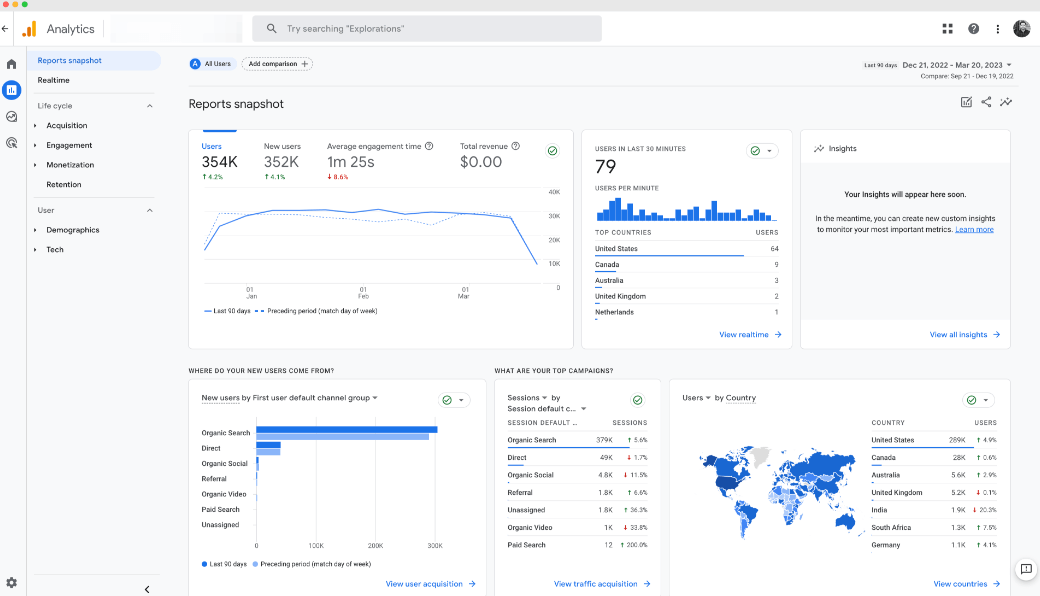
9. Seasonal Promotions
Seasonal offers are a proven way to capture attention and increase conversions during peak retail windows—especially in the Canadian market, where shopping habits often align with distinct holidays, weather shifts, and cultural moments.
Plan promotions around major dates like Boxing Day, Canada Day, Back-to-School season, or the lead-up to winter holidays. Limited-time discounts, exclusive bundles, and themed products create urgency and inspire action.
Example: During the holiday rush, offer free shipping and priority handling across Canada to build goodwill and boost conversion rates. Highlight delivery cut-off dates for each province to maintain trust and reduce post-holiday complaints.
Pro Tip: Use countdown timers or “deal of the day” pop-ups during high-traffic periods to encourage faster decision-making and boost average order value.

10. Social Media Marketing
Social media is a powerful tool for e-commerce brands looking to increase visibility, drive traffic, and foster deeper engagement with Canadian shoppers. Active users spend considerable time on platforms like Instagram, Facebook, TikTok, and Twitter, often interacting with brands they trust or admire.
Interactive content such as polls, contests, and quizzes can significantly boost engagement and extend your reach. These campaigns not only encourage user interaction but also create a buzz around your brand, prompting new visitors to check out your offerings.
Example: Run a Canada Day-themed contest asking followers to share their favorite Canadian-made products for a chance to win a gift card or exclusive products. Encourage user-generated content by asking participants to tag friends, spreading your brand across their networks and increasing your visibility.
Pro Tip: Integrate interactive quizzes that help potential customers find products suited to their needs. Share results in a public space and celebrate winners, which not only rewards engagement but also helps your content go viral, optimizing impressions from new audiences.
Source: https://sproutsocial.com/insights/social-media-ecommerce/
11. Customer Testimonials
In Canadian e-commerce, customer testimonials are a key factor in establishing trust and credibility with potential buyers. These reviews serve as social proof, giving new customers confidence in your products and services. By showcasing authentic customer experiences, you can effectively communicate dependability and customer satisfaction, ultimately boosting ROI.
Promoting Customer Testimonials
To maximize the impact of your customer testimonials, strategically place them across your website. Position them on product pages, checkout areas, and even in a dedicated section highlighting user feedback. Regularly updating these testimonials ensures they remain relevant and reflective of the current customer experience.
Example: Create a “Customer Stories” carousel on your homepage or alongside product descriptions. Use testimonials that emphasize the unique benefits of your product, paired with star ratings and customer photos to make them more relatable. Refresh this content regularly to keep it dynamic and engaging for returning visitors, ensuring your platform remains fresh and trustworthy.
Pro Tip: Consider showcasing a mix of Canadian customers from various regions to make your testimonials more relatable and connect with diverse demographics across the country.
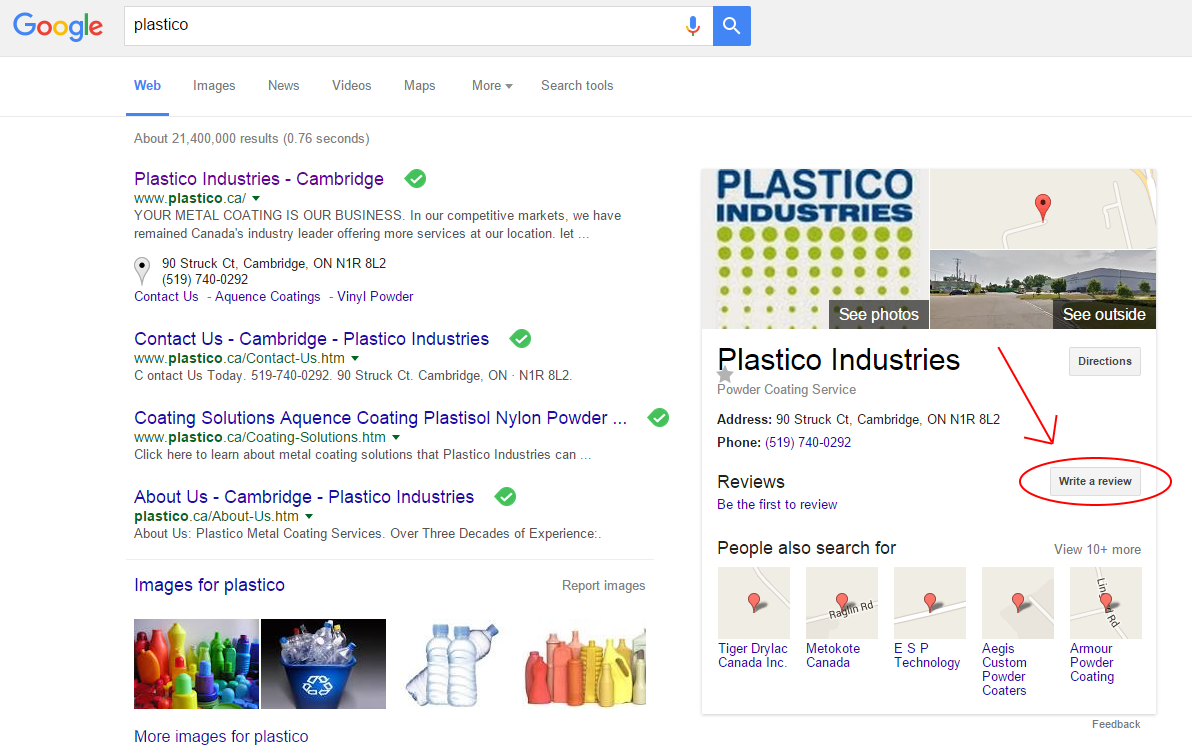
12. Use Pop-Ups Strategically
When designed thoughtfully, pop-ups can be a powerful tool for capturing user attention without overwhelming the experience. By conveying important information—such as special offers, promotions, or sign-up prompts—pop-ups can seamlessly guide potential customers toward conversions. In Canadian e-commerce, it’s especially important to ensure that pop-ups are well-timed and relevant to the customer’s experience.
Strategically Timed Pop-ups
Pop-ups should be strategically timed to ensure they appear at the most opportune moments, such as when users are about to exit or after they’ve spent a certain amount of time on your website. This minimizes disruption and maximizes effectiveness.
By incorporating a compelling call-to-action (CTA), such as a discount offer or free shipping incentive, pop-ups can drive engagement and improve conversion rates.
Example: Create a time-delayed pop-up that offers free shipping or a special discount to first-time visitors. Use an eye-catching design and a clear CTA like "Claim Your Offer" to make the deal feel exclusive. This approach not only motivates immediate action but also encourages return visits from new customers.
Pro Tip: Consider including bilingual pop-ups in both English and French to cater to the diverse Canadian market, especially in regions like Quebec.
Source: https://www.shopify.com/ca/blog/pop-up-shop
13. Promoting Your Canadian Identity: Made in Canada and Proud
In Canadian e-commerce, highlighting your business’s Canadian ownership and product origins is a powerful differentiator. Many consumers prefer to support local businesses that contribute to the Canadian economy, and showcasing your Canadian identity can foster trust and loyalty among customers.
How to Promote Your Canadian-Owned Brand
-
Use Clear Canadian Branding
Incorporate Canadian symbols such as the maple leaf or the "Proudly Canadian" logo on your website, packaging, and marketing materials. These symbols immediately communicate your business's Canadian roots, which can build emotional connections with Canadian consumers. -
Feature Your Story
On your "About Us" page or in your product descriptions, share the story of your company’s founding in Canada. Highlight the importance of supporting local businesses, sourcing materials within Canada, and employing Canadian workers. Authenticity is key—customers appreciate knowing that they are supporting a company with strong local values. -
Showcase Made-in-Canada Products
Be transparent about which products are made in Canada. For those that are manufactured or assembled within the country, emphasize this in product descriptions and marketing campaigns. This is especially important in sectors like apparel, food, or artisanal goods, where consumers may be more inclined to buy local. -
Incorporate "Made in Canada" Labels
Use "Made in Canada" labels on your product pages and during checkout to reassure customers of the authenticity of the products they’re purchasing. This also aligns with Canadian trade standards, making your business more credible. -
Local Partnerships and Collaborations
If you work with other Canadian suppliers, feature their businesses on your website or in social media posts. Highlight how you’re contributing to the Canadian economy by supporting local artisans, manufacturers, or farmers. This will resonate with customers who are committed to supporting homegrown talent and businesses.
Example:
If you sell clothing, create a section on your website dedicated to the "Made in Canada" collection. Feature photos of the Canadian factories where the products are made or highlight the artisans behind your goods. Add a badge next to your products that states, “Proudly made in Canada” and tell the story of how supporting Canadian manufacturing supports local communities.
Choose Yotpo for Maximum ROI
Yotpo simplifies and amplifies profit-oriented methods for businesses in Canada. It provides review systems generating proven returns for Canadian retailers. These systems dynamically publicize authentic end-user comments, assisting potential consumers believe in your goods.
Yotpo too empowers patron retention initiatives with quantifiable income effects. It tracks and rewards shoppers while encouraging devotion. Paired with analytics attributes, Yotpo aids find what impels conversions. Through user-built content management and segmented email campaigns, it backs brand individuality and increase.
Consequences of Ignoring ROI Strategies
Dismissing revenue-centered strategies charges e-commerce owners in assorted areas. You risk losing faithful shoppers by not enacting patron retention programs with measurable profit effect. Without review platforms generating verified returns for Canadian retailers, possible buyers are less likely to trust your emblem.
Additionally, a lack of cellular optimization and streamlined checkout processes frustrates end users, leading to deserted carts. Poor email tactics and untapped analytics squander means. Communal media involvement too suffers with no proper investments, thrusting new patrons to challengers.
Conclusion
Maximizing ROI in Canadian e-commerce necessitates premeditated strategies and functional instruments. By embracing the 13 high-impact strategies conferred, you form a staunch basis for patron attraction and retention. Platforms like Yotpo simplify processes and heighten your stage. They offer review platforms generating verified returns for Canadian retailers and patron retention programs with quantifiable profit impact. These factors, coupled with analytics, email campaigns, and cellular-first optimization, ensure quantifiable growth. Commence enforcing these strategies presently to see tangible improvements in ROI.
Operating a competitive e-commerce platform in Canada demands more than just marketing excellent items. Companies necessitate strategies that maximize return on investment (ROI) to flourish in an increasingly digital marketplace. Without a design to maximize ROI, organizations may squander resources and lose market portions.
High ROI tactics concentrate on targeting the appropriate patrons and making sure those customers keep coming back. Ignoring these tactics can lead to inefficiencies, stagnant development, and diminished profits.
Yotpo, a trusted marketing platform, assists Canadian companies by presenting review mechanisms generating proven returns for Canadian retailers and facilitating loyal customer programs with quantifiable profit effect. Implementing the right approaches can transform an ordinary platform into a high-functioning e-commerce operation.

